Rocky Mountain Bird Observatory had a productive and successful first field season studying Baird’s (Ammodramus bairdii) and Grasshopper Sparrow (Ammodramus savannarum) overwintering survival and habitat use in the Chihuahuan Desert grasslands of northern Mexico. From early November to early March, RMBO gathered a massive amount of novel and informative data on these two species at Reserva Ecológica El Uno near Janos, Chihuahua, Mexico.
Summary of the Data
With a committed and hardworking crew of technicians and volunteers, we captured and radio-tagged 103 sparrows, amassed 3,683 bird location points and collected habitat data at each location. Under the cover of darkness, cautiously avoiding the abundant and potentially ankle-breaking kangaroo rat mounds, we located more than 100 roost sites to see where birds sleep in relationship to their foraging territories.
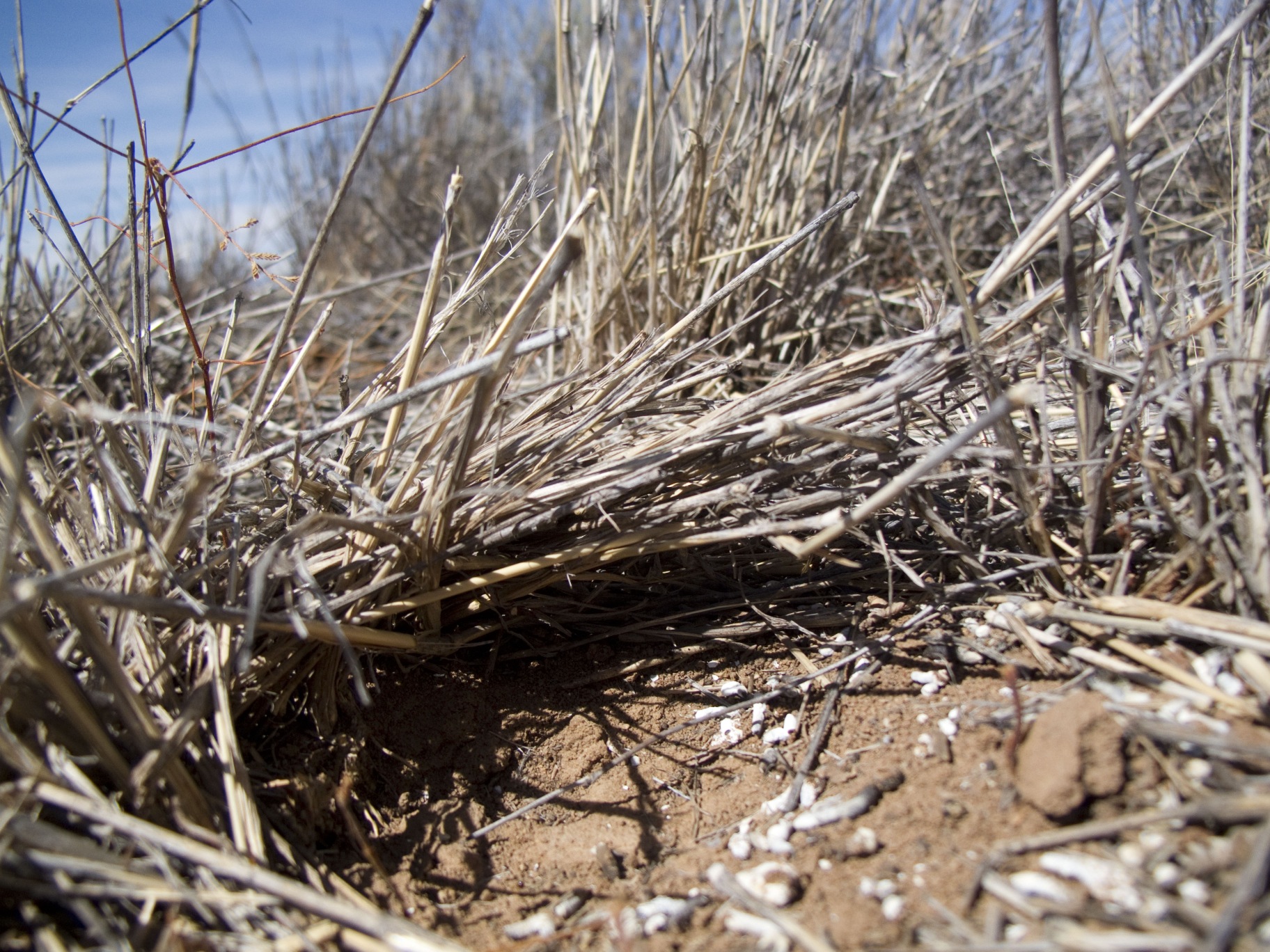
A roost site used by a Baird’s Sparrow. The birds appear to use sites with overhanging grass and create a shallow scrape in the soil. Photo by Erin Strasser.
To collect this data, we used radio-telemetry, locating sparrows once to twice daily, driving, walking and bicycling countless miles while scanning for lost birds. The birds didn’t make it easy for us, either. A few went missing for weeks, only to turn up 1 to 2.5 miles from their original territory; others were carried far out of range by predators. During our daily excursions, we often confronted bitter cold, snow and winds that gusted up to 60 mph.
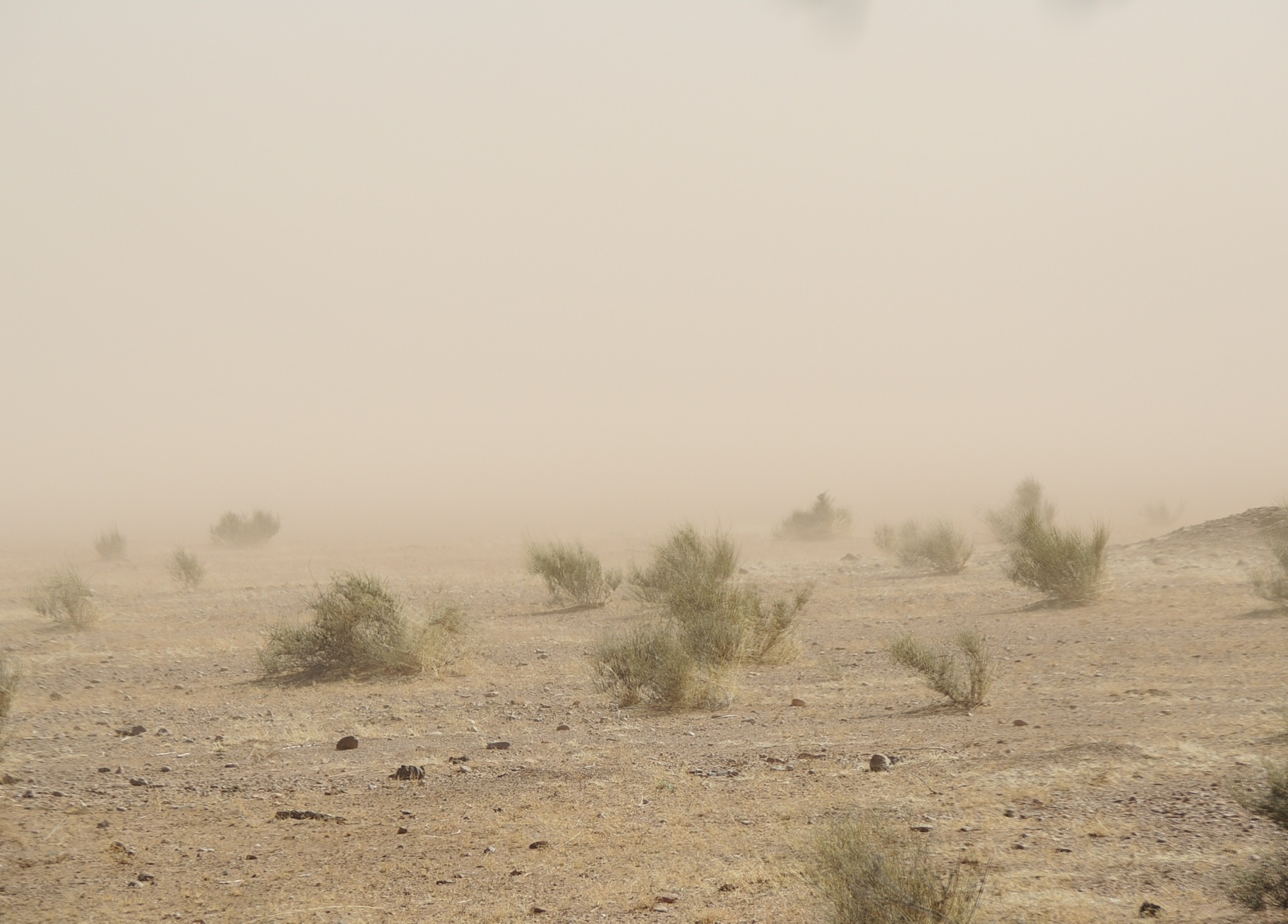
A windy day at Reserva Ecológica El Uno. The extent of habitat degradation in the vicinity of the ranch was apparent as overgrazed land created giant dust plumes. Photo by Denis Perez.
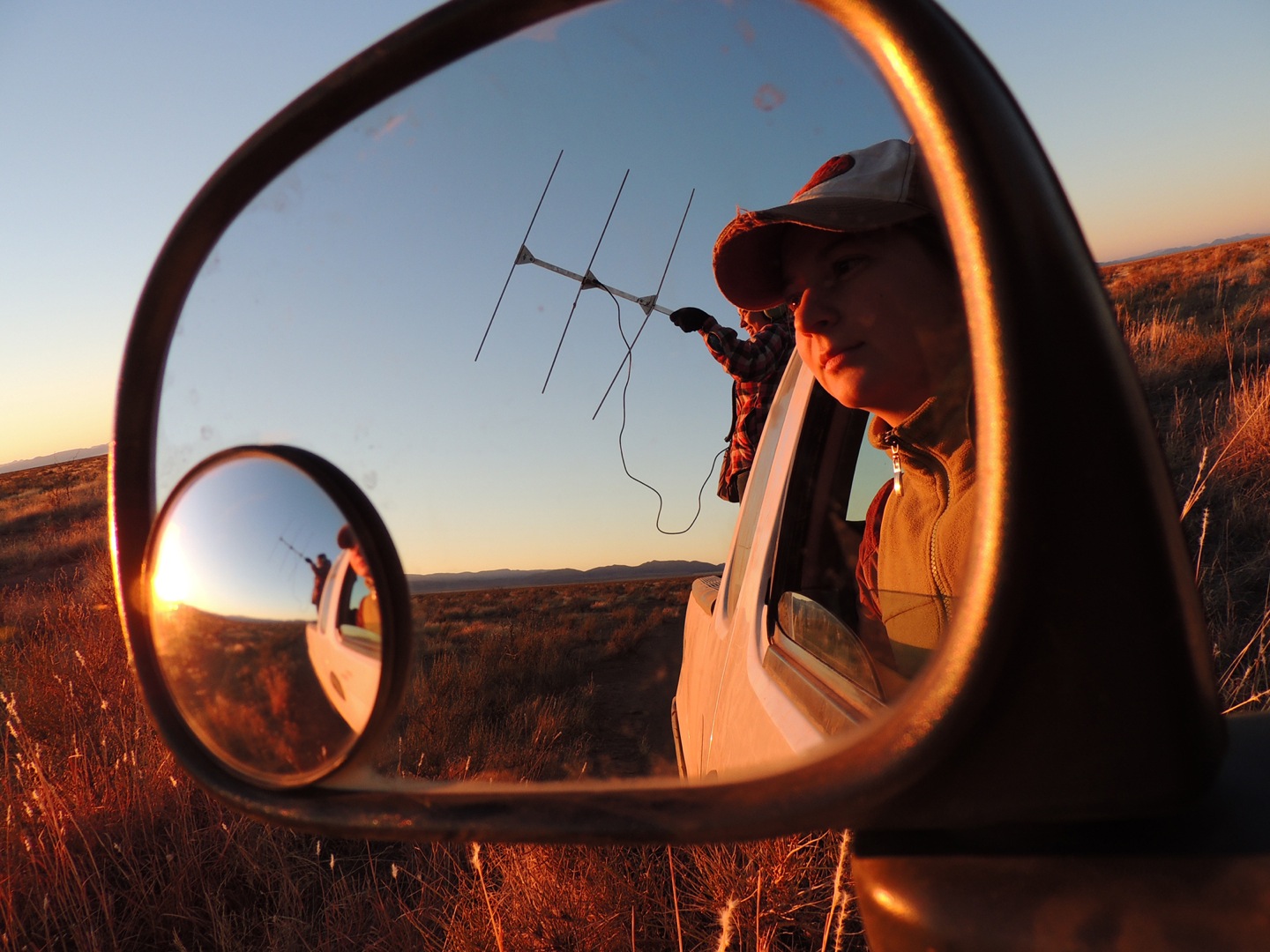
Technicians scan with an antenna from the back of the truck, one of the ways in which we searched for missing birds. Photo by Denis Perez.
In summary, 35 birds had 50 or more points recorded for them. Nineteen birds survived during the study period. Another six likely survived; however, their transmitter batteries died before we were able to recapture them. Four birds were followed during the entire study period.
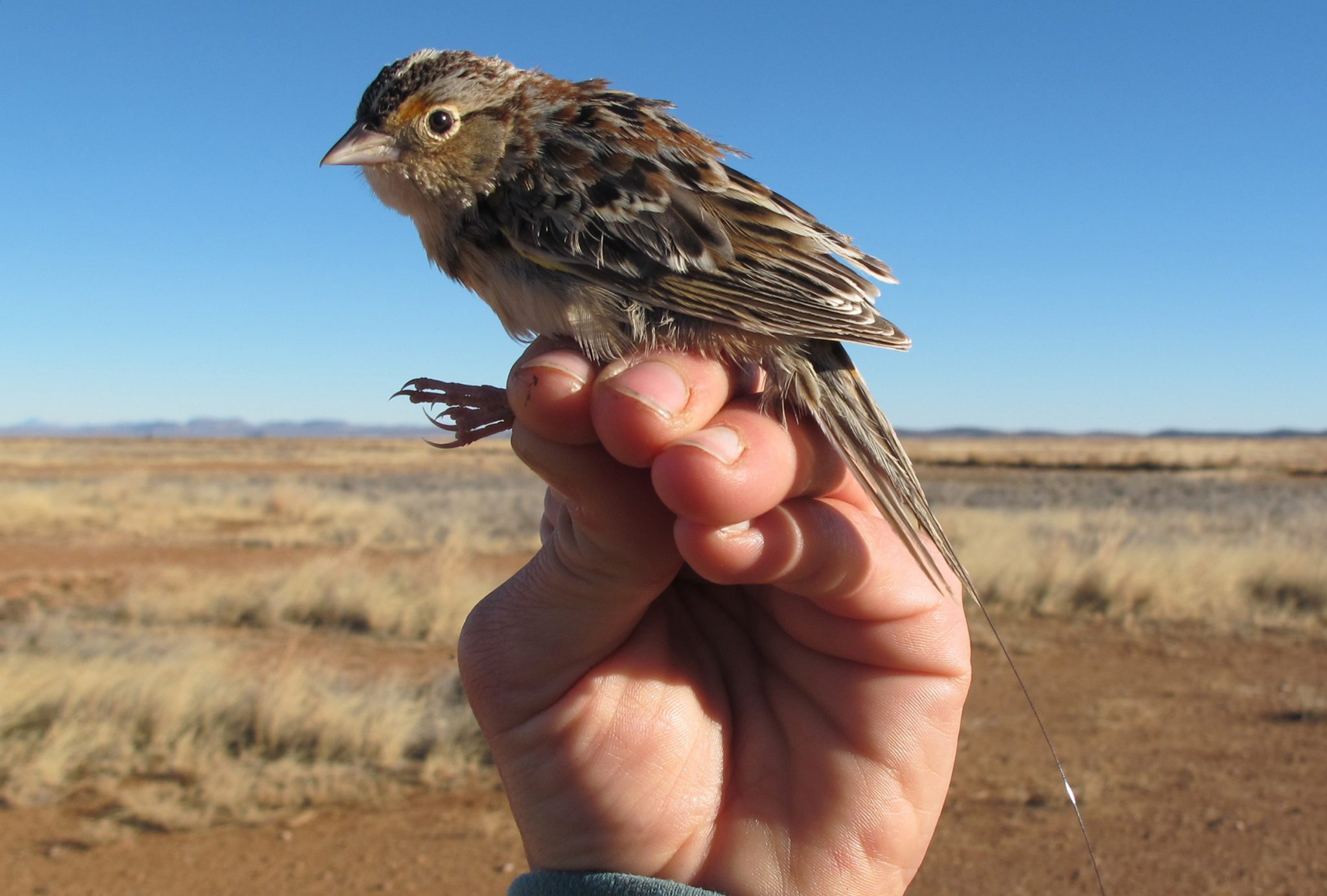
A Grasshopper Sparrow wearing a backpack transmitter. This particular bird was captured in November, its transmitter replaced in December and January, and the transmitter finally removed in March. Photo by Erin Strasser.
We confirmed a total of 33 sparrow deaths. Most deaths were the result of predators, such as Merlins, Prairie Falcons, Northern Harriers, Loggerhead Shrikes and Short-eared Owls. Two birds were lost to mammals, likely foxes or bobcats, both of which were observed in the study area. I say confirmed deaths because 23 individuals disappeared at some point. It is unknown whether those captured in mid-November were still migrating, predators carried carcasses out of range, birds moved out of our range or transmitters stopped functioning.
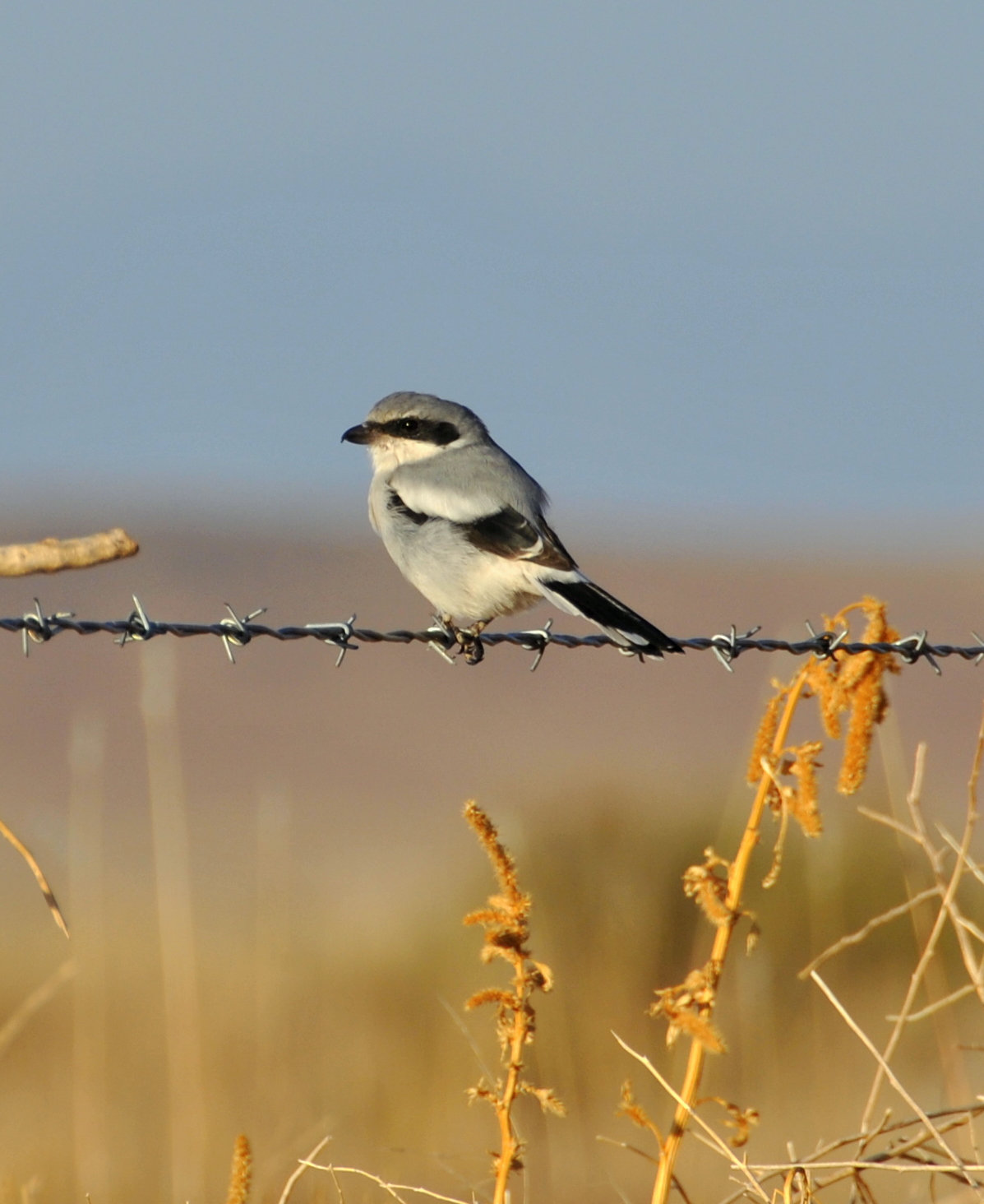
A Loggerhead Shrike perched on a barbed wire fence surveys the grassland for its next victim. Photo by Denis Perez.
Mortality rates followed an interesting bell curve pattern: We noted few in November, February and the first week of March; however, rates were high from late December to late January, with the peak number dying around the first week of January. This could reflect harsher weather or increased snow cover, which may have taken a physiological toll on the birds, made locating food or eluding predators more difficult, or could reflect temporal patterns in predator abundance. We noticed fewer Northern Harriers as the season progressed, and Loggerhead Shrike numbers peaked mid- to late January. There were days when you couldn’t drive down the road without flushing one to three shrikes from the fence line! We even observed three shrikes pursuing one Baird’s Sparrow about 100 feet above the ground (that is pretty high for a sparrow that spends its life on or near the ground). This did not end well for the sparrow, and I thought one of the shrikes would be worse for wear after the mid-air encounter and subsequent free fall into a mesquite patch.
Outreach and Education
Although gathering all of this data is vital to bird and habitat conservation, education and outreach are equally important. If the local residents are unaware of the plight of the Chihuahuan Desert, or they do not realize that healthy grassland benefits not only songbirds, but the cattle and humans that depend on it, there is little incentive for them to care for the land. There is a large Mennonite presence in Chihuahua, and because of cultural and ideological differences, this community has been difficult to engage. Thus, it was exciting – and offered a glimmer of hope – when a local Mennonite family came out to the field to learn about our research. They arrived just in time to watch us round up some of our radio-tagged sparrows and had the opportunity to release some of the birds.
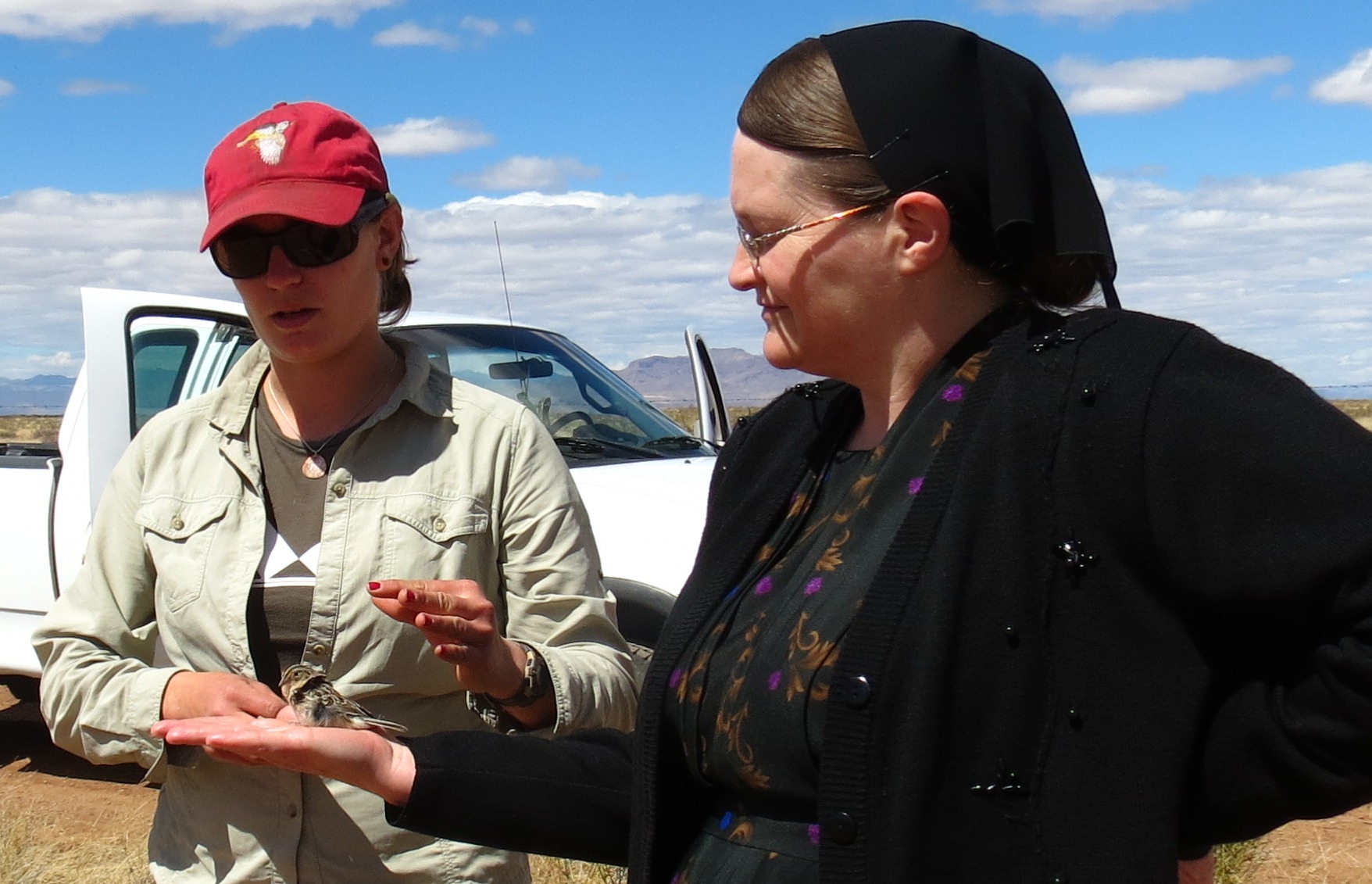
RMBO biologist Erin Strasser places a Grasshopper Sparrow in a local Mennonite woman’s hand milliseconds before it took off. Photo by Arvind Panjabi.
Over the second week of March, we gathered for the final attempt to recapture birds and remove transmitters before the sparrows migrated north. We had honed our bird roundup techniques by that point, as we successfully recaptured all 14 remaining birds with active transmitters and even had a few surprise recaptures, including two birds whose transmitters had fallen off.
Capturing Ghost Birds
Most exciting of all, we recaptured two “ghost birds” that haunted their territories after their transmitter’s battery life ended. I had a strong hunch that a particular bird we began tracking in November, but were unable to recapture in January, was alive and kicking on its winter territory. Shortly after its second transmitter died in early February, I spotted a banded Baird’s Sparrow, antenna trailing as it weaved its way through the grass. I quickly scanned through all active and missing frequencies without hearing so much as a beep. As this was the sole bird we banded in this area, I was 95% certain that this was in fact bird #5.500. The bird was briefly spotted again during March recaptures, but eluded the group us as we combed its territory. On our final day in the field, we spotted the bird again, and with arms waving madly and hats flying through the evening air, we managed to flush this ghost bird from a dense patch of grass into our nets.
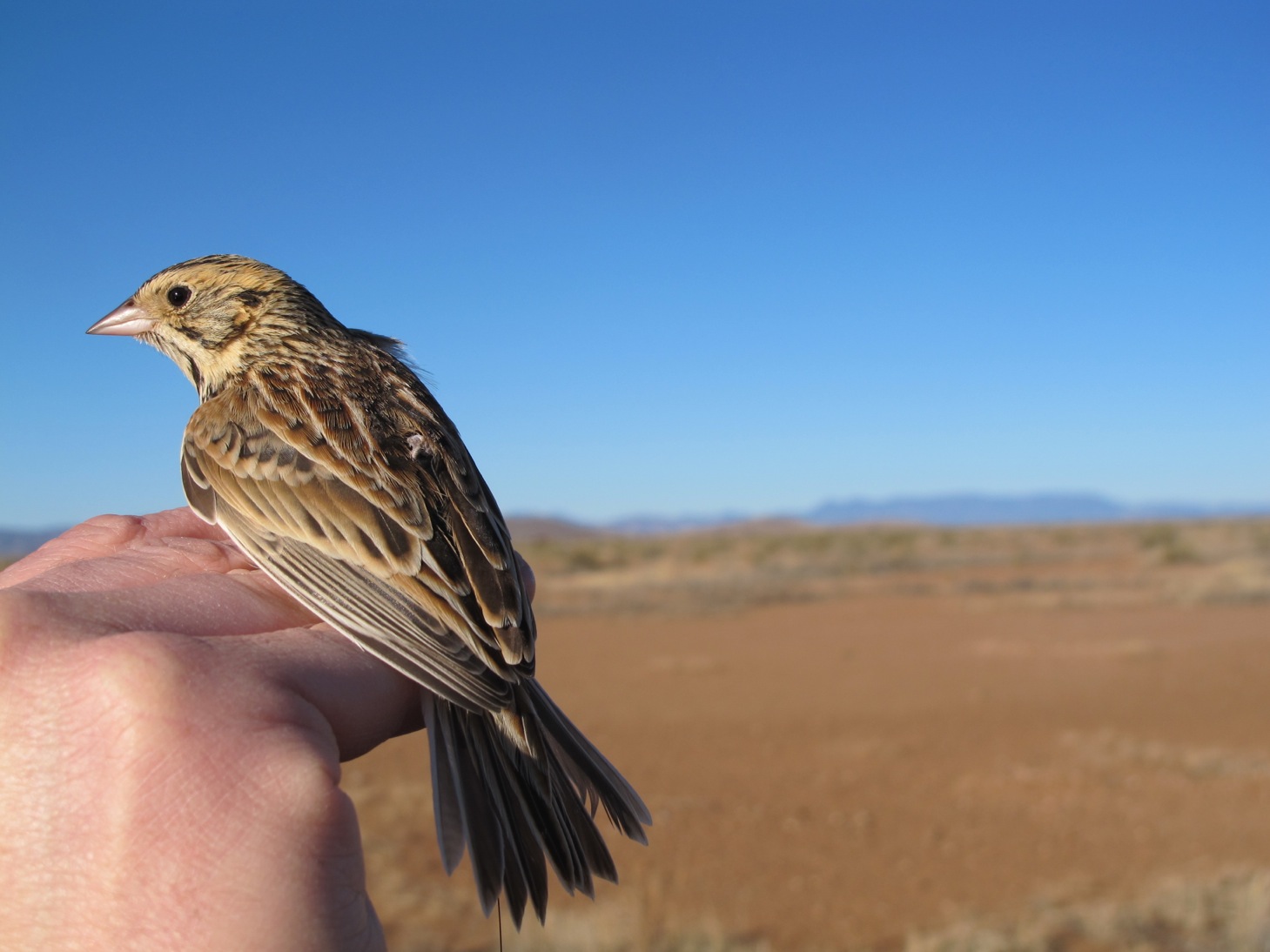
We captured this “ghost” Baird’s Sparrow on the final day in the field and removed its transmitter. Photo by Erin Strasser.
We still have much to learn about the overwintering ecology of these two species, and every piece of data and anecdote will be informative. With the help of partners, RMBO hopes to expand this work to other regions of the Chihuahuan Desert to gain broader perspectives into the habitat requirements and factors that influence survival. Until next year, or hasta el próximo año!
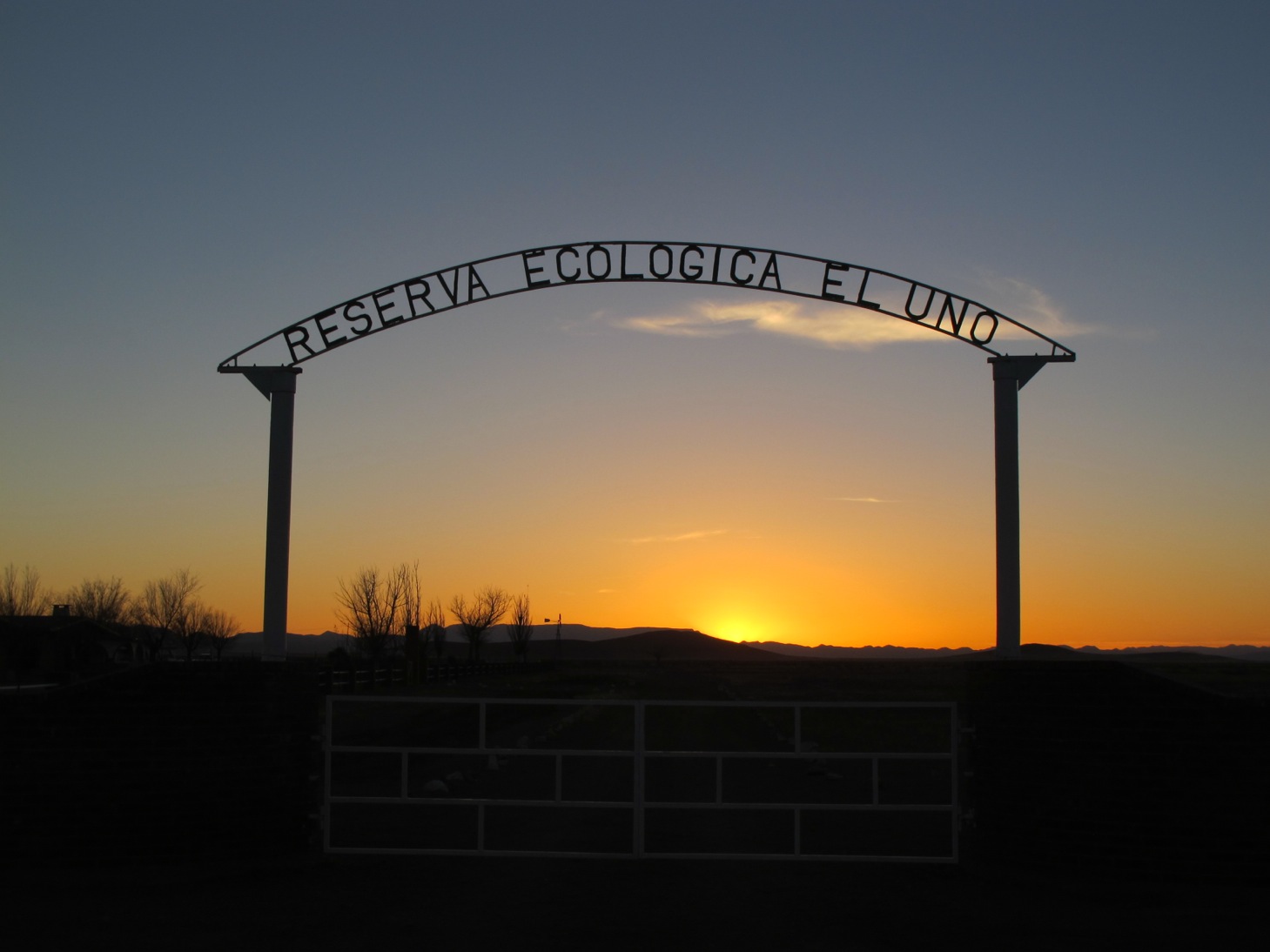
Entrance to Reserva Ecológica El Uno at sunset, the site of our research. Photo by Erin Strasser.
Thank you to the National Park Service, U.S. Forest Service International Programs and the Commission for Environmental Cooperation for funding this research, The Nature Conservancy – Mexico, Universidad Autónoma de Nuevo Leon and Universidad Autónoma de Chihuahua for in-kind support, and the many volunteers who helped during bird recapture efforts. The enormous number of man hours dedicated runs into the thousands!
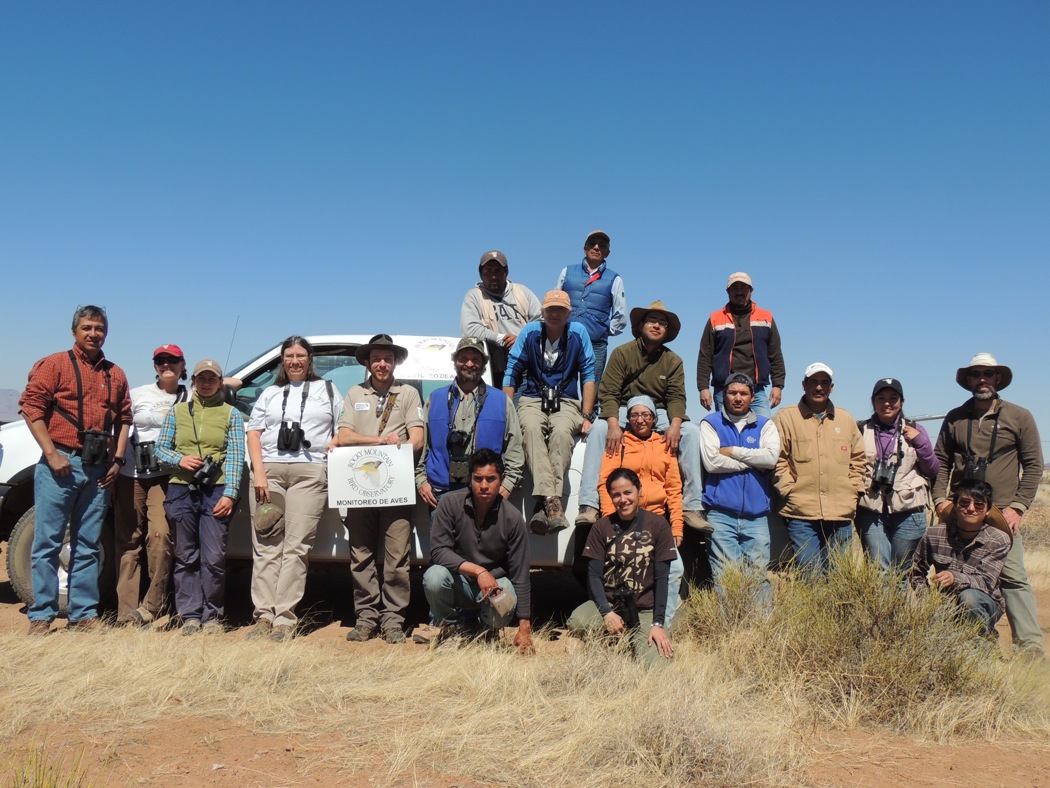
The group gathers for a photo after a successful day of sparrow recaptures.
~ Erin Strasser, Grassland Bird Telemetry Field Team Leader


